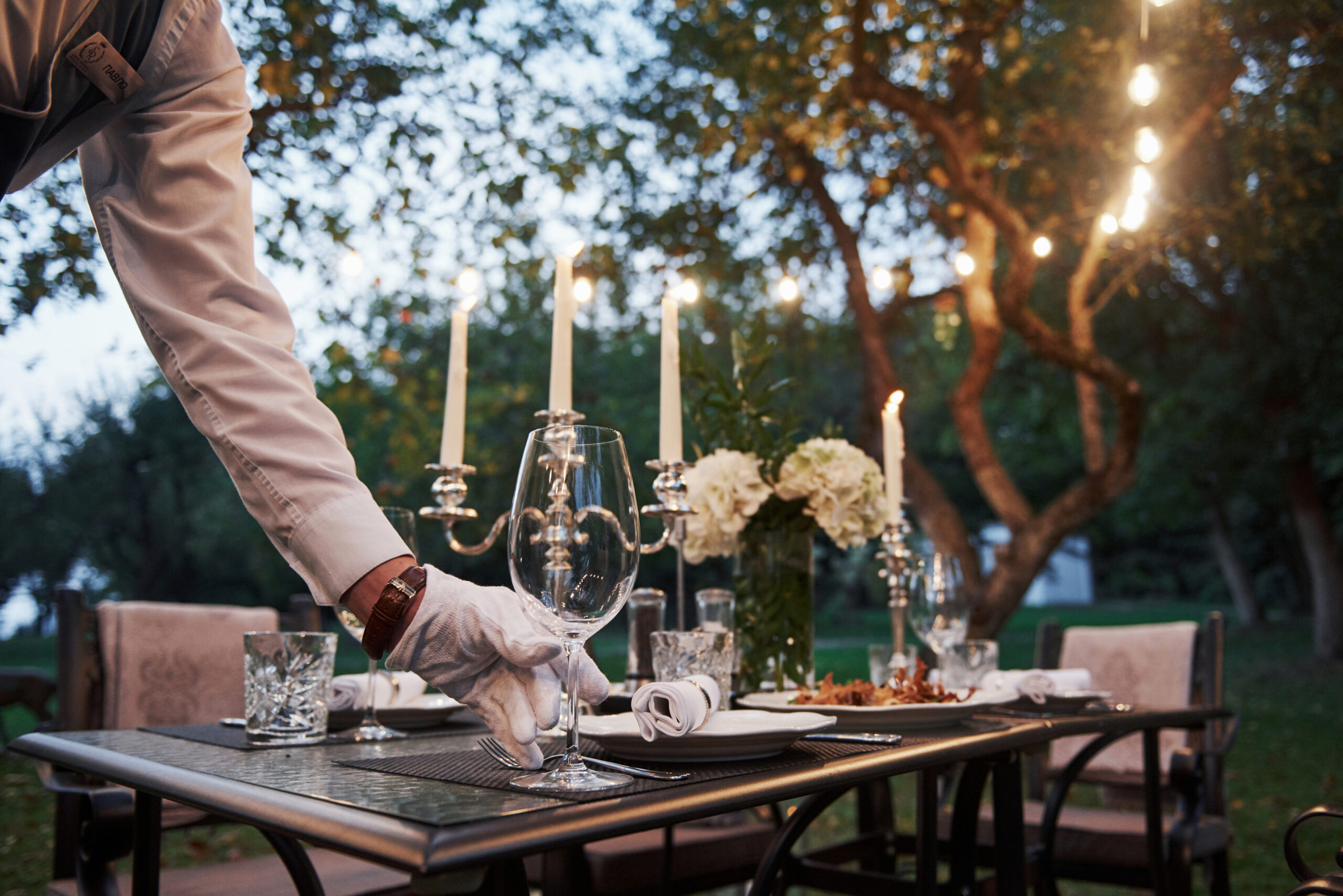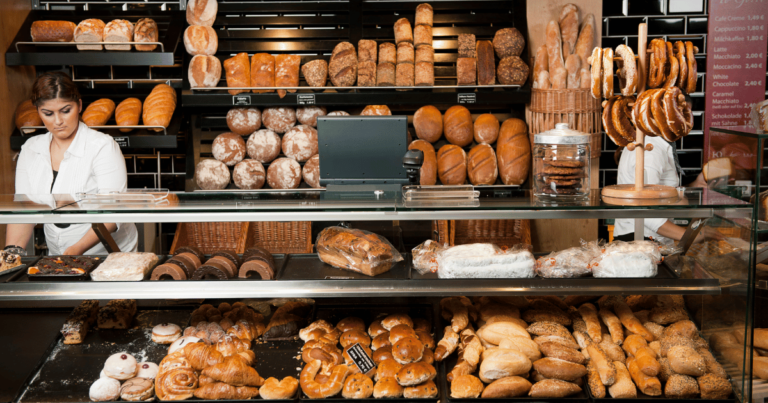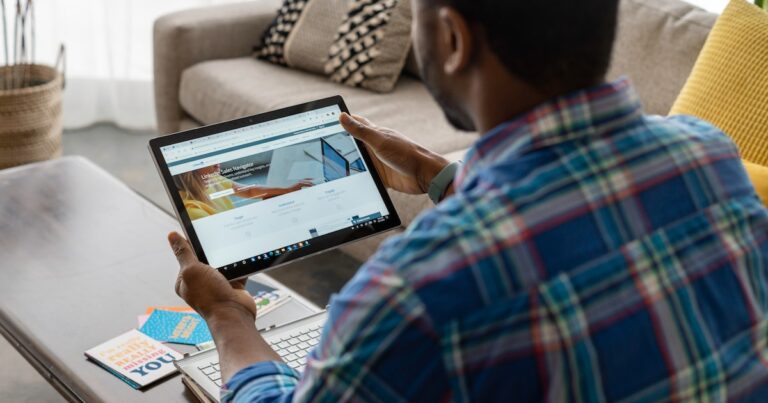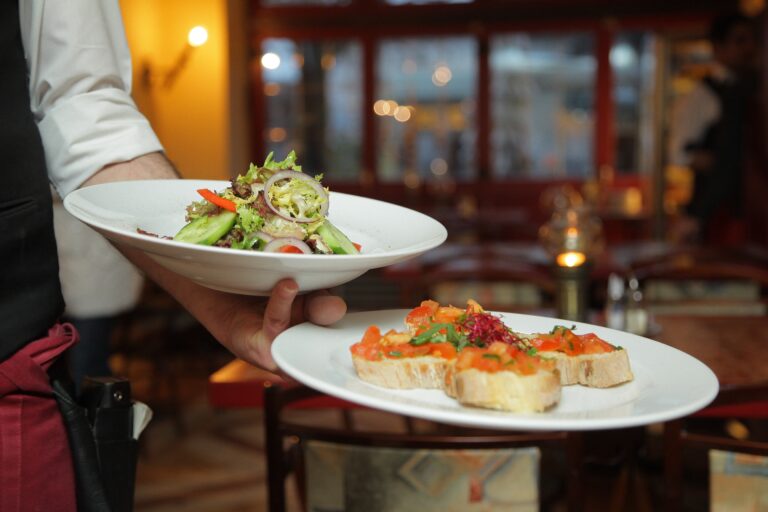Social Media Presence for Restaurants
social media presence for restaurants to promote their business, attract new customers, and build long-term loyalty. Restaurants can increase their online visibility and reach a wider audience by creating engaging content and optimizing their profiles for search engines. Restaurants can also build relationships with their customers through social media by engaging with followers, responding to comments, and creating a sense of community. Furthermore, social media is a low-cost way for restaurants to market their products because it allows them to reach a large audience without breaking the bank. For these reasons, social media has evolved into an essential component of a restaurant’s marketing strategy and should be a top priority for any restaurant owner looking to expand their business.
Here is a brief overview and significance of the five tips that will be discussed
Use high-quality, visually appealing images: Because social media is a visual platform, high-quality images can attract potential customers’ attention. This tip will cover lighting and composition techniques for taking visually appealing photographs of your food.
Engage with your followers: Building a strong social media presence requires engagement. You can foster a sense of community and loyalty among your followers by responding to comments and messages, soliciting feedback, and holding contests.
Utilize user-generated content (UGC): UGC is content created by customers that promotes your restaurant. You can increase your online visibility and establish social proof by encouraging customers to share their experiences at your restaurant and resharing their posts.
Offer exclusive discounts or promotions to social media followers: By incentivizing your social media followers to follow your social media channels, you can increase foot traffic to your restaurant.
Keep an eye on your online reputation: Online reviews and comments have the power to make or break a restaurant’s reputation. You can build trust and credibility with your customers by monitoring your online reputation, responding to negative reviews in a professional and empathetic manner, and taking steps to address complaints.
owners can improve their social media presence for restaurants, attract new customers, and build long-term loyalty by implementing these tips. Social media is a continuous process that requires time and effort, but it can be a powerful tool for growing your restaurant.
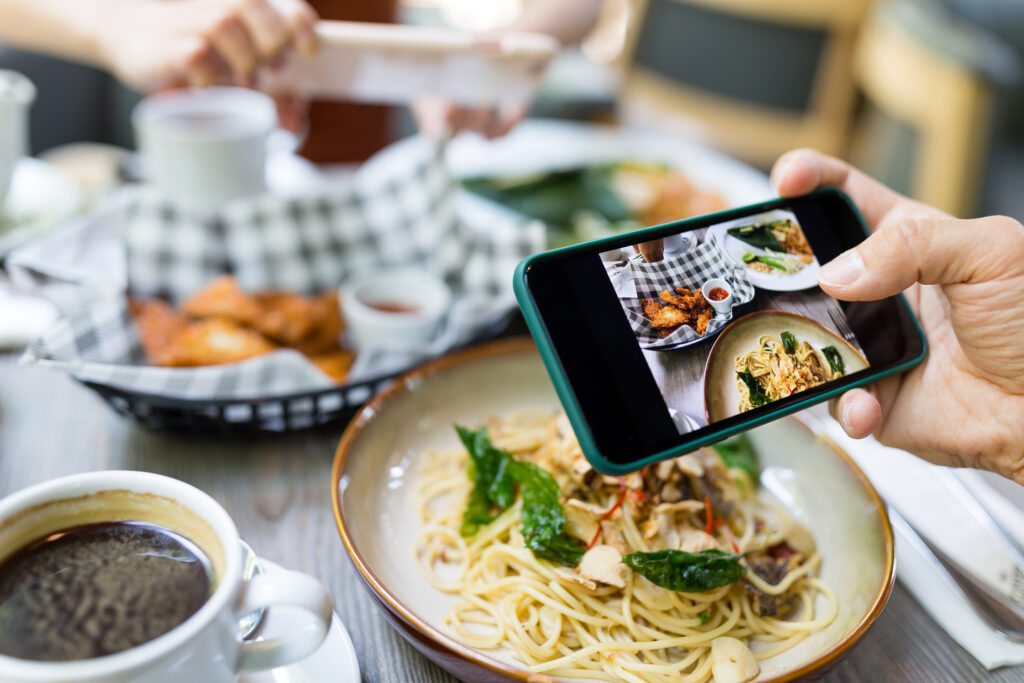
Use high-quality, visually appealing images
Why pictures are so important on social media presence for restaurants?
Visuals are important on social media because they can quickly capture the attention of potential customers and effectively communicate a restaurant’s brand and offerings. Here are some of the reasons why visuals matter on social media:
Attract Attention: social media presence for restaurants feeds are crowded, and visuals can help a restaurant’s posts stand out. A visually appealing image or video can quickly capture the attention of a user and entice them to interact with the post.
communicate information: Visuals can be used to quickly communicate information about a restaurant’s offerings, such as the menu, ambiance, and style. A well-crafted image or video can communicate a restaurant’s distinct brand and value proposition, assisting in the attraction of new customers and the development of brand awareness.
Engage Emotions: Visuals can also elicit emotions and help potential customers connect. An image of a delicious dish, for example, can elicit hunger, whereas a video of happy diners can elicit a sense of community and social proof.
Overall, visuals are an effective way to communicate a restaurant’s brand, offerings, and value proposition on social media, assisting in the attraction of new customers and the development of long-term loyalty.
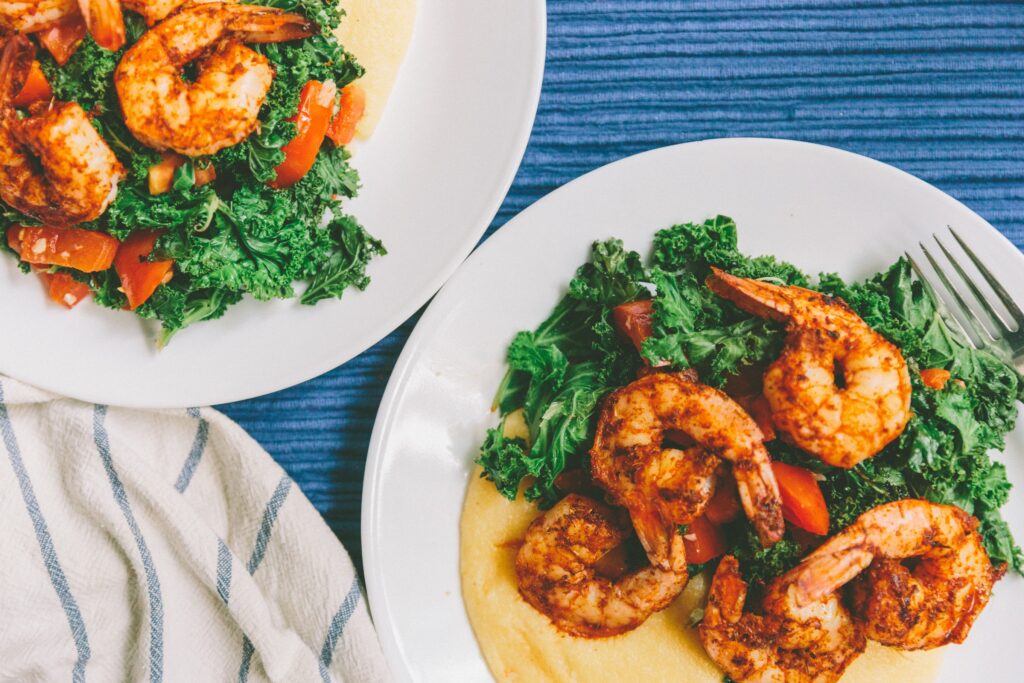
Tips for taking high-quality food photography
High-quality food photography necessitates meticulous attention to detail, lighting, composition, and equipment. Here are some pointers to help you improve your food photography for social media presence for restaurants:
Use Natural light: This is the best source of lighting for food photography. To take advantage of the soft, diffused light, shoot during the day near a window or outside.
To take advantage of the soft, diffused light, shoot during the day near a window or outside.
Pay Attention to Composition: In food photography, the composition is critical. To create a visually appealing image, use the rule of thirds and pay attention to the placement of the food, props, and background.
To create a visually appealing image, use the rule of thirds and pay attention to the placement of the food, props, and background
Use Props: props can be used to add interest and depth to your food photography. To create an inviting scene, use complementary props such as utensils, napkins, and serving dishes.
To create an inviting scene, use complementary props such as utensils, napkins, and serving dishes.
Focus on the Food: Food should be the main attraction. Create a blurred background with a shallow depth of field to draw the viewer’s attention to the food.
Edit Your Photos: Editing your photos can help to improve their quality. To make your photos stand out, use editing software or apps to adjust the brightness, contrast, and color balance.
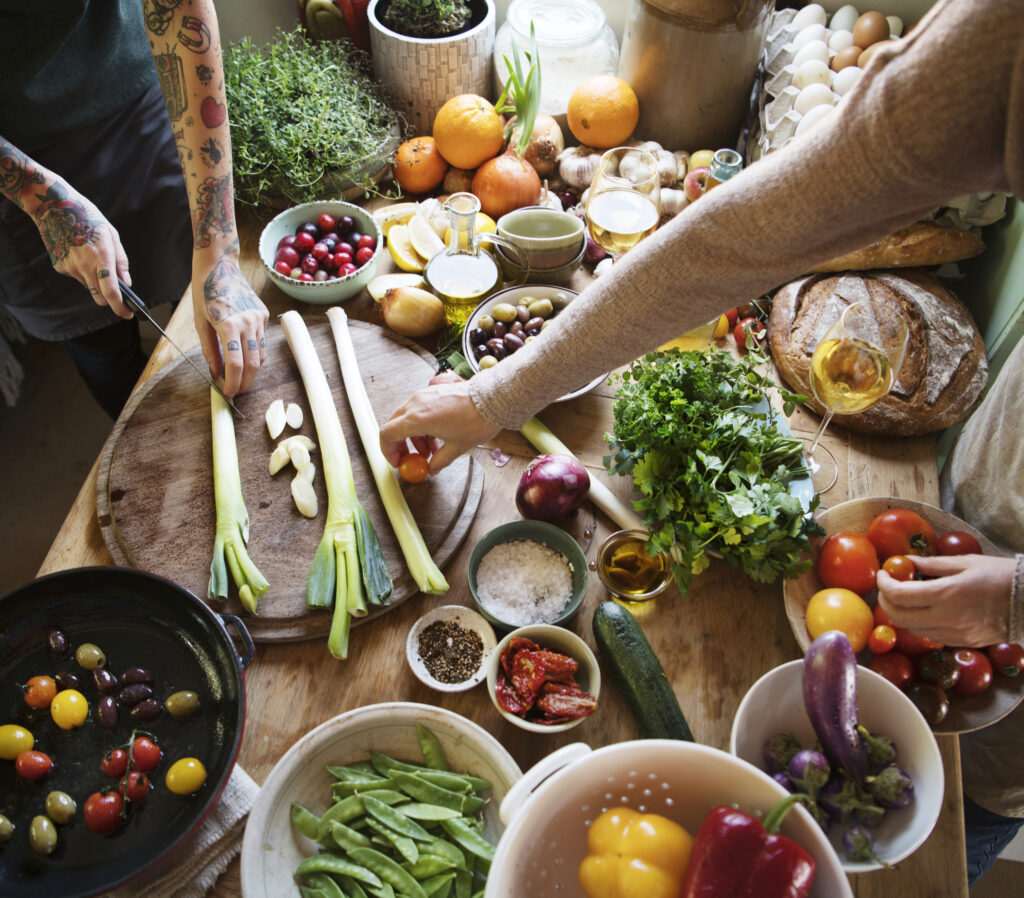
Successful visual content from other Restaurants in New Zealand
Here are some examples of successful visual content from social media presence for restaurants:
Odettes Eatery – This Auckland-based restaurant showcases its dishes and unique interior design with high-quality, stylized images. On their Instagram page, which has over 18,000 followers, they frequently post images of their signature cocktails and elaborate platters.
BurgerFuel – This popular burger chain promotes menu items and engages with its audience through social media posts that include eye-catching graphics and animations. They also frequently use user-generated content to highlight their products, such as customer photos and reviews.
The Fed – This Christchurch-based restaurant creates a cohesive and visually appealing Instagram feed by combining professional photos and user-generated content. They also use Instagram Stories to share daily specials and behind-the-scenes content with their followers, which helps to foster a sense of community among them.
The Lula Inn – This Auckland waterfront bar and eatery showcases its menu items and unique atmosphere with vibrant, colorful images. They also frequently include images of their events and live music performances, which contributes to the excitement and energy surrounding their brand.
These restaurants were able to attract and engage with their audiences on social media by using high-quality, visually appealing content, resulting in increased brand awareness and foot traffic.
Engage with your followers
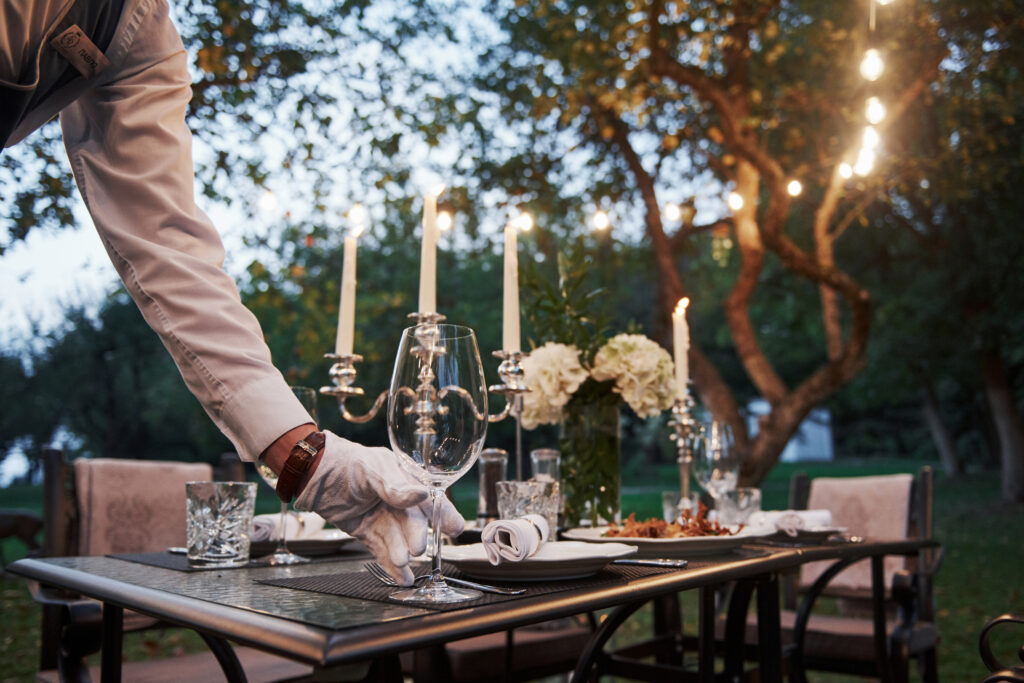
Importance of engaging with followers on social media presence for restaurants
Engaging with followers is important for social media presence for restaurants for a variety of reasons.
For starters, it promotes a sense of community and connection with customers. Restaurants can create a more personal and engaging relationship with their followers by responding to comments, acknowledging feedback, and even sharing user-generated content. This can boost brand loyalty and word-of-mouth marketing.
Second, engaging with followers can aid in the development of a positive reputation and online presence. Restaurants that respond to customer comments and address concerns in a timely and professional manner demonstrate that they value their customers and are committed to providing excellent service. This can result in positive feedback and recommendations, which can help to bring in new customers.
Finally, engaging with social media followers can assist restaurants in gathering valuable feedback and insights. Restaurants can gain insights into their customers’ preferences, needs, and concerns by monitoring comments and messages, which can help to inform their menu, marketing, and overall business strategy.
Strategies for engaging with followers
There are several strategies restaurants can use to engage with their social media followers:
Responding to Comments: Engaging with followers on social media is as simple as responding to comments. Restaurants can respond to comments by answering questions, thanking customers for their feedback, and even offering special promotions or discounts.
Asking for Feedback: Another way to engage with followers and demonstrate that you value their opinions is to ask for feedback. Restaurants can solicit feedback on their menu, service, or overall experience and use this data to improve.
Running contests: Contests on social media can be a fun and engaging way to engage followers and generate buzz about a restaurant’s brand. Restaurants, for example, can ask followers to share their favorite dish or drink in exchange for a chance to win a prize.
Displaying User-Generated Content: Displaying user-generated content, such as customer photos and reviews, is an excellent way to engage followers while also highlighting the restaurant’s offerings. Restaurants can repost user-generated content and tag the customer, fostering a sense of community and encouraging others to share their own content.
Going Live: Using social media to host live videos or events can be a powerful way to engage with followers and provide a behind-the-scenes look at the restaurant. Restaurants, for example, can host live cooking demonstrations or Q&A sessions with the chef.
Restaurants can use these strategies to build a strong and engaged social media following, which can help to increase brand awareness, customer loyalty, and overall success.

Examples of successful engagement tactics from other restaurants in New Zealand
Here are some examples of successful engagement tactics from New Zealand restaurants:
The Grill by Sean Connolly – This Auckland-based restaurant has a strong social media presence and engages with its followers on a regular basis. They respond quickly to comments and messages, and they provide special promotions and discounts to their followers. They also hold social media contests, such as giving away free meals to lucky winners who share their favorite dish or beverage.
Joy Bong Thai – This Christchurch restaurant uses social media to solicit feedback and interact with customers. On their Instagram stories, they frequently post polls and questions, asking followers to vote on their favorite dishes and provide feedback on the restaurant’s service and atmosphere. They also regularly repost and tag customer photos, which helps to foster a sense of community and engagement.
Hello Beasty – This Wellington-based restaurant uses Instagram live videos to engage with its followers while also showcasing its unique dishes and cocktails. They frequently host live cocktail-making demonstrations and Q&A sessions with their head bartender, which contributes to the brand’s excitement and engagement.
Ombra – This Wellington-based restaurant engages with its Instagram followers frequently by responding to comments and messages and sharing user-generated content. They frequently repost customer photos and reviews while tagging the customer, which fosters a sense of community and engagement.
These restaurants have been able to build a strong and engaged social media following by utilizing these engagement tactics, which have helped to increase brand awareness, customer loyalty, and overall success.
Leverage user-generated content

Definition of user-generated content and its benefits
User-generated content (UGC) is any type of content created and shared by users or customers of a specific brand or product, such as photos, videos, reviews, or social media posts. UGC is frequently created and shared on social media platforms, and it can be an effective tool for social media presence for restaurants to increase engagement and promote their brand.
One of the primary advantages of user-generated content is that it provides social proof and validation for a restaurant’s offerings. Positive customer experiences and reviews can help to build trust and credibility with potential customers. UGC can also provide important insights into customer preferences and needs, allowing restaurants to improve their menu, service, and overall customer experience.
Another advantage of user-generated content is that it can help to increase brand awareness and reach. When customers share UGC on social media, their followers can see it, which can help promote the restaurant to a larger audience. This is especially useful for social media presence for restaurants looking to attract new customers or expand their reach.
Finally, user-generated content (UGC) can help to foster a sense of community and engagement with a restaurant’s brand. Restaurants can foster a sense of loyalty and connection with their customers by sharing and reposting UGC. Increased customer retention, word-of-mouth marketing, and overall business success can result from this.
In summary, user-generated content is any type of content created and shared by customers, and it can be a powerful tool for restaurants to increase brand awareness, build engagement, and foster a sense of community and loyalty among their customers.
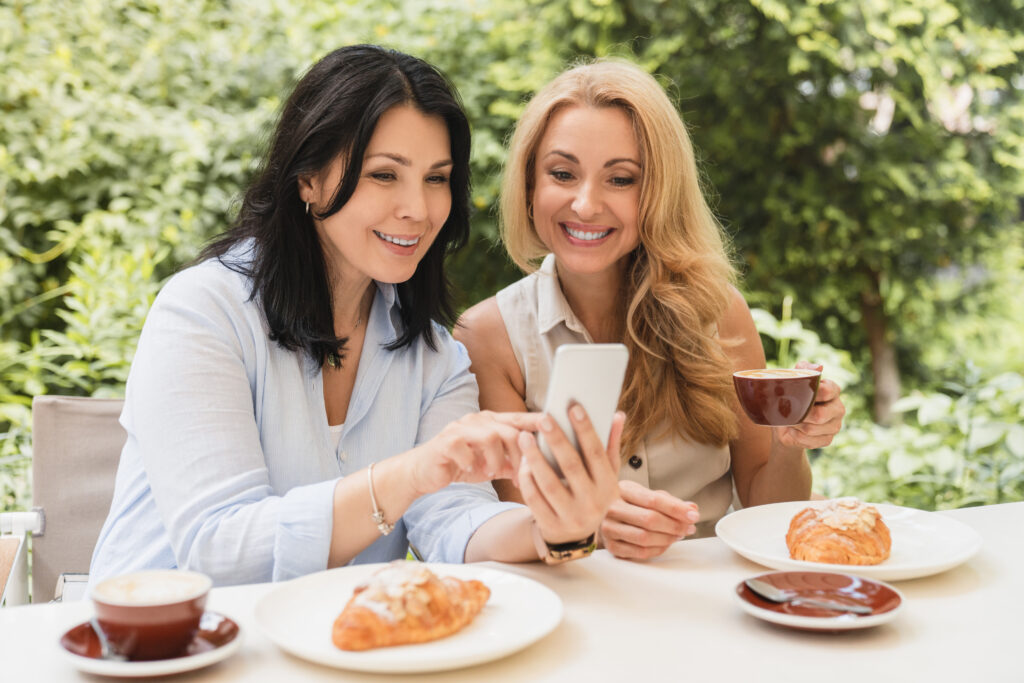
Tips for encouraging customers to share UGC
Inviting customers to share user-generated content (UGC) can help restaurants increase engagement and promote their brands. Here are some suggestions for getting customers to share UGC. Here are some suggestions for getting customers to share UGC: Create a unique and catchy hashtag that is specific to your restaurant to encourage customers to share UGC and help promote your brand. Include the hashtag on all of your social media profiles, menus, and other marketing materials.
Offer incentives: Offering incentives to customers who share UGC, such as discounts or free items, can encourage them to participate and share their experiences with their followers.
Repost and share UGC: When customers see that the restaurant is sharing and reposting its content, it may encourage them to share more in the future. When reposting someone else’s content, make sure to credit and tag the original creator.
Hosting UGC contests: Contests such as a photo contest or a review contest, can help to generate excitement and engagement around your brand. Make sure to provide appealing prizes and publicize the contest on your social media channels.
Set up a photo booth or provide props: Providing a photo booth or props such as signs or hats can encourage customers to take photos and share them on social media. Make sure your branded hashtag is visible on the props or backdrop.
Restaurants can encourage customers to share UGC and help promote their brand to a wider audience by implementing these tips.
Examples of successful UGC campaigns from other restaurants in New Zealand
social media presence for restaurants in New Zealand have used user-generated content (UGC) campaigns to engage customers and promote their brands with success. Here are a couple of examples:
BurgerFuel: BurgerFuel encouraged customers to use the hashtag #CreateYourOwn to share their burger creations on social media. The best entries were then reposted and shared on the restaurant’s social media channels, which helped to promote the brand and foster a sense of community among customers.
Mexicali Fresh: Mexicali Fresh launched a user-generated content (UGC) campaign in which customers were asked to share photos of themselves enjoying their food with the hashtag #Mexpics. The restaurant then used the UGC to create a photo gallery on its website, which helped to promote its brand and showcase the experiences of its customers.
FishSmith: To promote their new menu items, FishSmith encouraged customers to share photos of the dishes on social media with the hashtag #FishSmithFeasts. The best entries were then reposted and shared by the restaurant, which contributed to the excitement and engagement surrounding the new menu items.
L’affare: L’affare, a coffee roastery, and cafe encouraged customers to use the hashtag #LaffareLove to share photos of their coffee experiences. The best entries were then reposted and shared on the restaurant’s social media channels, which helped to promote their brand and foster a sense of community among coffee lovers.
These examples show the effectiveness of UGC campaigns for restaurants in New Zealand. Restaurants can increase customer engagement, brand awareness, excitement, and loyalty by encouraging customers to share their experiences and creating a sense of community around their brand.
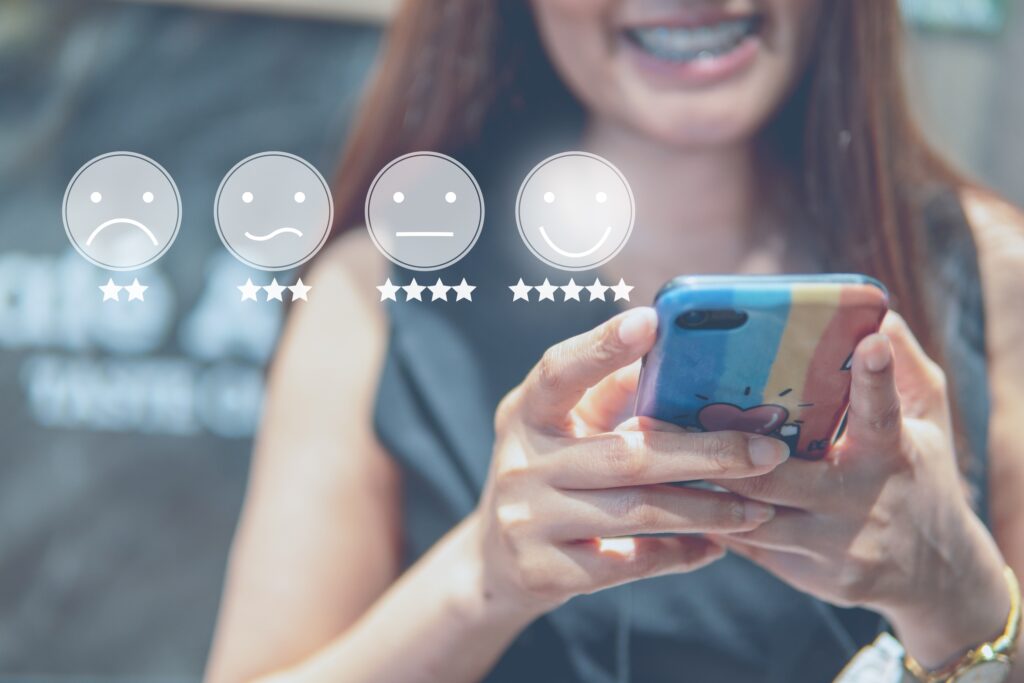
Offer exclusive deals to social media followers
social media presence for restaurants benefit from exclusive deals for a variety of reasons. For starters, it can bring in new customers who would not have visited the restaurant otherwise. Restaurants can entice new customers to try their menu by offering a special deal, such as a discount or a free item with a purchase.
exclusive deals can aid in the development of customer loyalty. Restaurants can create a sense of exclusivity and reward their most loyal customers by offering exclusive deals to customers who have signed up for a loyalty program or follow the restaurant on social media.
Exclusive deals can help to boost sales during slow times. Restaurants can increase foot traffic and sales during off-peak times, such as midweek or certain hours of the day, by offering deals during these times.
Offering exclusive deals can help social media presence for restaurants stand out from the crowd. Restaurants can gain a competitive advantage and stand out in a crowded market by offering unique deals that cannot be found elsewhere.
Overall, offering exclusive deals can be a powerful marketing tool for restaurants, aiding in the acquisition of new customers, the development of loyalty, the increase of sales, and the differentiation of the brand from competitors.
Examples of exclusive deals restaurants can offer
Restaurants can entice customers and increase sales by offering a variety of exclusive deals. Here are a couple of examples:
Offer a discount on a specific menu item, a percentage off the total bill, or a special price for a meal combo to encourage customers to visit the restaurant and try something new.
Freebies: Offering free items with a purchase can be an excellent way to entice customers to choose a specific restaurant. Free drinks, appetizers, desserts, or even a complimentary meal on a customer’s birthday are examples of freebies.
Loyalty rewards: Providing a loyalty program that rewards customers for returning to the restaurant or making repeat purchases can encourage customers to return. Free items, discounts, or special perks such as VIP access or early access to new menu items can be used as rewards.
Limited-time offers, such as a seasonal menu item or a one-day-only discount, can create a buzz around the restaurant and encourage customers to act quickly to take advantage of the deal.
Bundled deals: Combining multiple menu items into a special deal, such as a meal for two or family-style dinner, can provide value to customers and encourage them to bring friends or family along to take advantage of the deal.
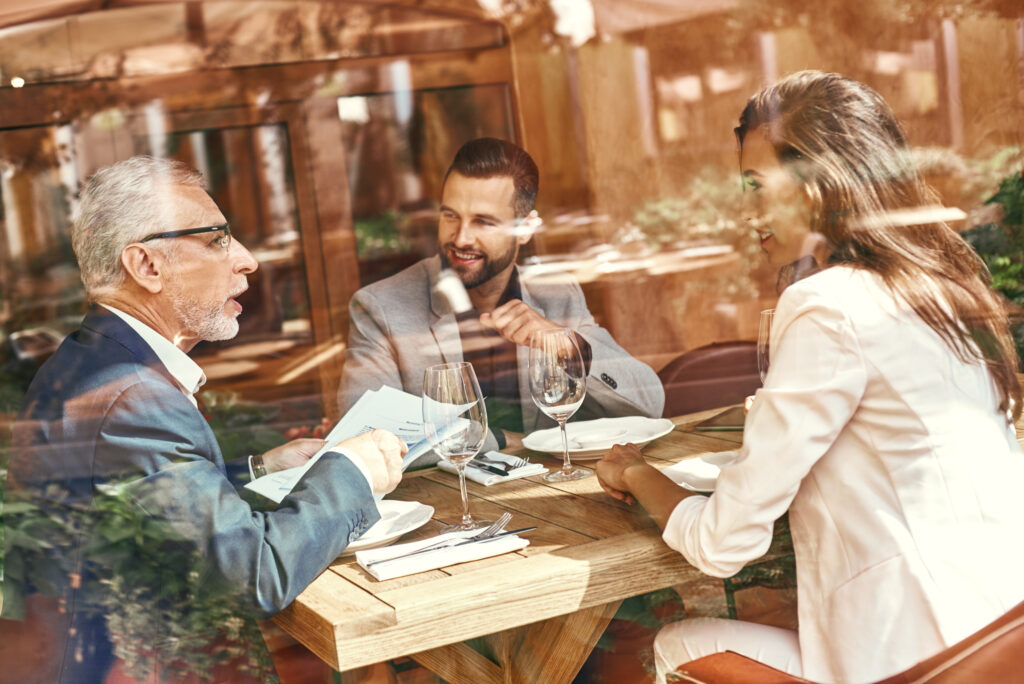
Tips for promoting exclusive deals to social media followers
Promoting exclusive deals to social media followers can be an effective way for restaurants to increase foot traffic and sales. Here are some ideas for using social media to promote exclusive deals:
Make eye-catching graphics: Create visually appealing posts by using high-quality images or graphics that stand out in users’ feeds. Include the deal’s specifics, such as the discount or freebie being offered.
Use hashtags: Include relevant hashtags in your posts to help users who are interested in the deal find them. This can include using popular food-related hashtags or creating a hashtag specifically for the deal.
Share on Multiple platforms: the deal on all of your social media platforms, including Facebook, Instagram, Twitter, and any other platforms that your restaurant uses. This can help to reach a larger audience and increase the likelihood that the deal will be seen by potential customers.
Encourage sharing: followers to share the post with their friends and family in order to help spread the word about the deal. Customers who refer their friends can be rewarded with a bonus deal, such as an additional discount or a free item.
Consider using paid advertising to increase the reach of the post and ensure that it is seen by a larger audience. This can be accomplished using platforms such as Facebook Ads or Instagram Ads.
Monitor your online reputation

Importance of monitoring your online reputation
Managing your internet reputation is critical for businesses, particularly restaurants, in today’s digital age. Your online reputation is the perception of your restaurant that people form based on what they see online, such as reviews, comments, and social media posts. Here are some of the reasons why you should keep an eye on your online reputation:
Good reviews and comments can increase trust with future customers, whilst bad reviews can destroy trust. You may assist to develop trust and credibility with clients by monitoring your internet reputation and responding to any bad feedback.
Monitoring your online reputation can provide useful input on what consumers like and dislike about your restaurant, which can help to improve the customer experience. You can improve the client experience and raise customer happiness by listening to this input.
Negative feedback can quickly spread online, potentially harming your reputation. By monitoring your online reputation, you can respond to negative criticism quickly and efficiently, demonstrating to customers that you care about their experience and are devoted to resolving any concerns.
Monitoring your online reputation can also provide useful insights into your competition. You can uncover areas where your restaurant can differentiate itself and stand out in a crowded market by keeping a watch on what consumers are saying about your competition.
Strategies for monitoring your online reputation
Monitoring your internet reputation is a crucial component of brand management for any restaurant. Here are some methods for keeping an eye on your internet reputation:
Configure Google Alerts: Google Alerts is a free application that allows you to track internet mentions of your restaurant. You may create alerts for the name of your restaurant as well as other important keywords or subjects linked to your company. This will keep you informed anytime your restaurant is discussed online.
Keep an eye on review sites: Review sites like Yelp and TripAdvisor are great places for consumers to offer input about your business. Maintain continuous monitoring of these sites and reply quickly to any bad evaluations. This demonstrates your dedication to resolving client complaints and enhancing the customer experience.
Monitor social media: Another significant forum for consumers to offer comments about your business is social media. Monitor your restaurant’s social media accounts on a regular basis and reply to any comments or messages as soon as possible. This helps to establish a relationship with clients and demonstrates that you are attentive to their opinions.
Promote favorable reviews: Provide great service and solicit feedback from consumers to encourage them to submit positive evaluations. You may even give them a discount or a free item on their next visit if they leave a review.
React to bad reviews professionally and respectfully: Responding to negative reviews professionally and respectfully can go a long way toward enhancing your restaurant’s image. Apologize for any problems and provide a remedy to the customer’s worries. This demonstrates that you value client input and are dedicated to enhancing the customer experience.
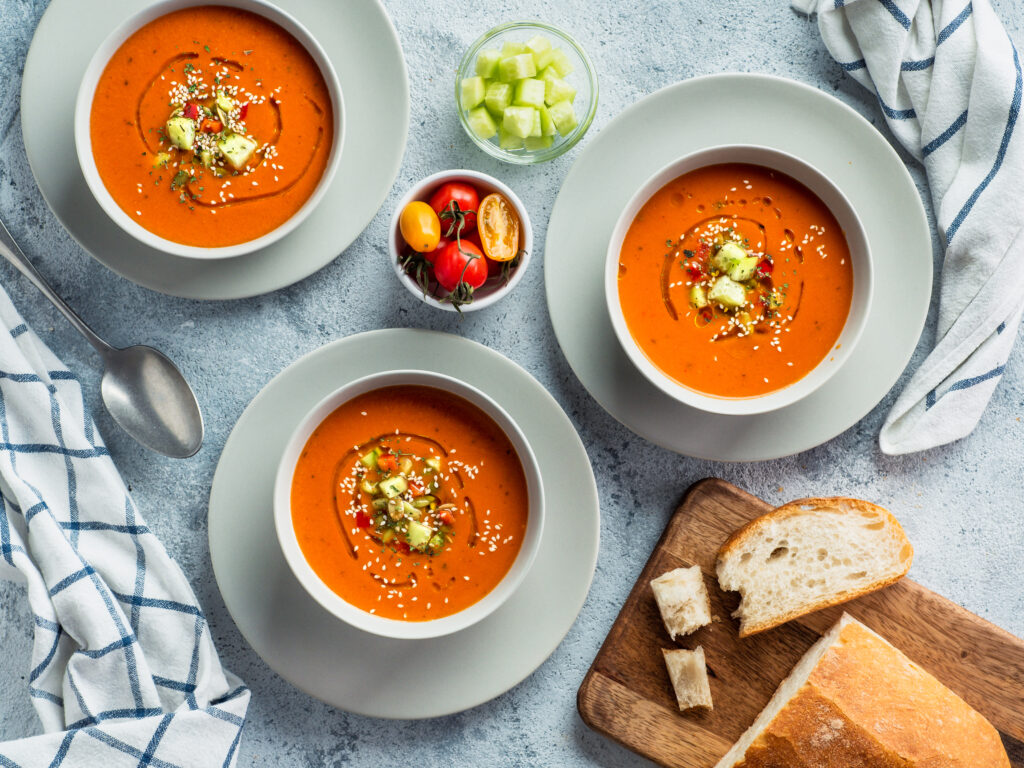
Tips for promoting exclusive deals to social media followers
Here are a few ideas for marketing special bargains to your social media followers:
Use eye-catching visuals: Showcase your special bargains with high-quality photographs or videos. This will make your content stand out and get your readers’ attention.
Use a clear call to action: To urge your followers to take advantage of your unique offer, use a clear and simple call to action. This may be as easy as saying, “Visit the link in our bio to get your discount!”
Create a sense of urgency: Build a sense of urgency by mentioning that the bargain has a restricted time period or that there are a limited number of spaces available. This will motivate your followers to act swiftly in order to take advantage of the offer.
Use relevant hashtags: Use relevant hashtags to help your fans locate your exclusive offer postings. Use a customized hashtag for your exclusive promotions to increase visibility and promote sharing.
Share exclusive deals with email subscribers: In order to enjoy special deals and promotions, encourage your social media followers to join your email list. This helps you to interact directly with clients and establish a loyal customer base.
Collaboration with influencers: Collaboration with influencers that have a strong social media following can assist to improve awareness of your exclusive deals. Choose influencers that are compatible with your brand and target demographic.
Monitor your online reputation
Restaurants must monitor their internet reputation in order to maintain a favorable image and ensure client happiness. Customers in today’s digital era rely significantly on internet evaluations and ratings to decide where to eat. Bad evaluations or remarks can affect a restaurant’s reputation and, as a result, cause it to lose customers.
By keeping an eye on your online reputation, you will be able to reply quickly to unfavorable reviews or comments and handle any difficulties or concerns that consumers may have. This not only communicates that you respect client input, but also that you are dedicated to providing a great eating experience.
Monitoring your internet reputation can also assist you in identifying trends and places for improvement. You may uncover typical complaints or suggestions and make required changes to improve your restaurant’s operations and customer experience by studying client feedback and comments.
Ultimately, keeping an eye on your internet reputation is an important part of any restaurant’s marketing plan. It assists you in maintaining a favorable image, responding to customer feedback, and improving company operations, resulting in enhanced customer satisfaction and loyalty.
Examples of successful reputation management tactics from other restaurants in New Zealand
Following are some examples of effective reputation management strategies used by other restaurants in New Zealand:
Odettes Restaurant in Auckland reacts to every comment, favorable or poor, with a unique note. They address any complaints or issues raised in bad reviews and praise customers for favorable feedback.
Logan Brown in Wellington invites clients to submit reviews on numerous platforms, including their website, Facebook page, and TripAdvisor. They also reply quickly to negative reviews and give remedies to any concerns raised.
The Bunker in Queenstown uses its website to display favorable evaluations from several platforms, including TripAdvisor and Facebook. They also reply to unfavorable evaluations in a professional and sympathetic manner, offering to rectify any concerns raised.
Ortega Fish Shack & Bar in Wellington utilize Instagram to post and tag customer images, demonstrating their appreciation for their customers’ comments and support.
These examples demonstrate that good reputation management methods include responding to reviews in a timely and professional manner, promoting favorable reviews, highlighting positive comments, and communicating with consumers on social media.
Conclusion

To summarize, restaurant owners may improve their social media presence by providing high-quality pictures, communicating with followers, promoting user-generated material, giving unique promotions, and monitoring their online reputation. Restaurant owners may boost brand awareness, increase customer engagement, and drive more revenue to their company by applying these strategies.
Restaurant owners should prioritize their social media presence and devote time and money to developing and implementing a social media strategy as a call to action. They should spend time getting to know their target audience and tailoring their material to them, as well as actively engaging with their followers and encouraging them to share their experiences online.
It’s critical to remember that social media is a continuous process, and developing a strong online presence requires time and work. Consistency is essential, and restaurant owners should be patient as they seek to create their social media brand. Restaurant owners can build a devoted following and eventually drive more revenue to their institution by consistently generating and posting high-quality content, connecting with their followers, and monitoring their online reputation.
Finally, restaurant owners that invest in their social media presence may reap enormous rewards. Restaurant owners may enhance their online image, boost customer interaction, and ultimately generate more traffic and sales to their restaurants by applying the five strategies described above.
